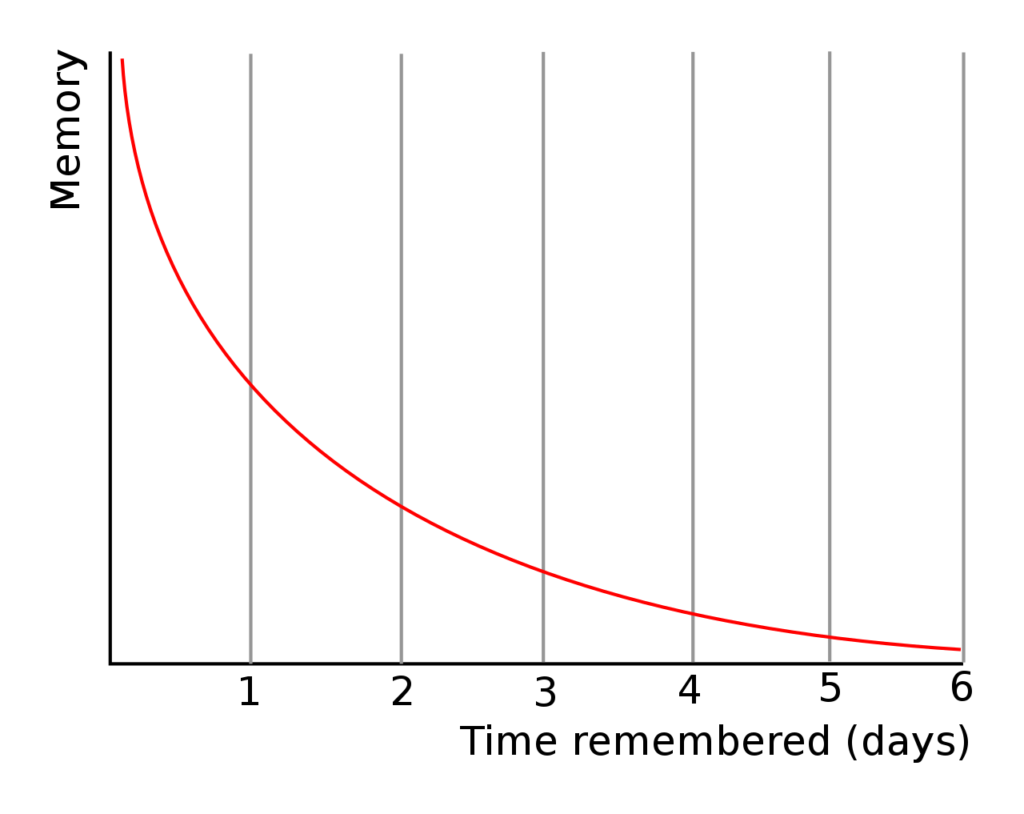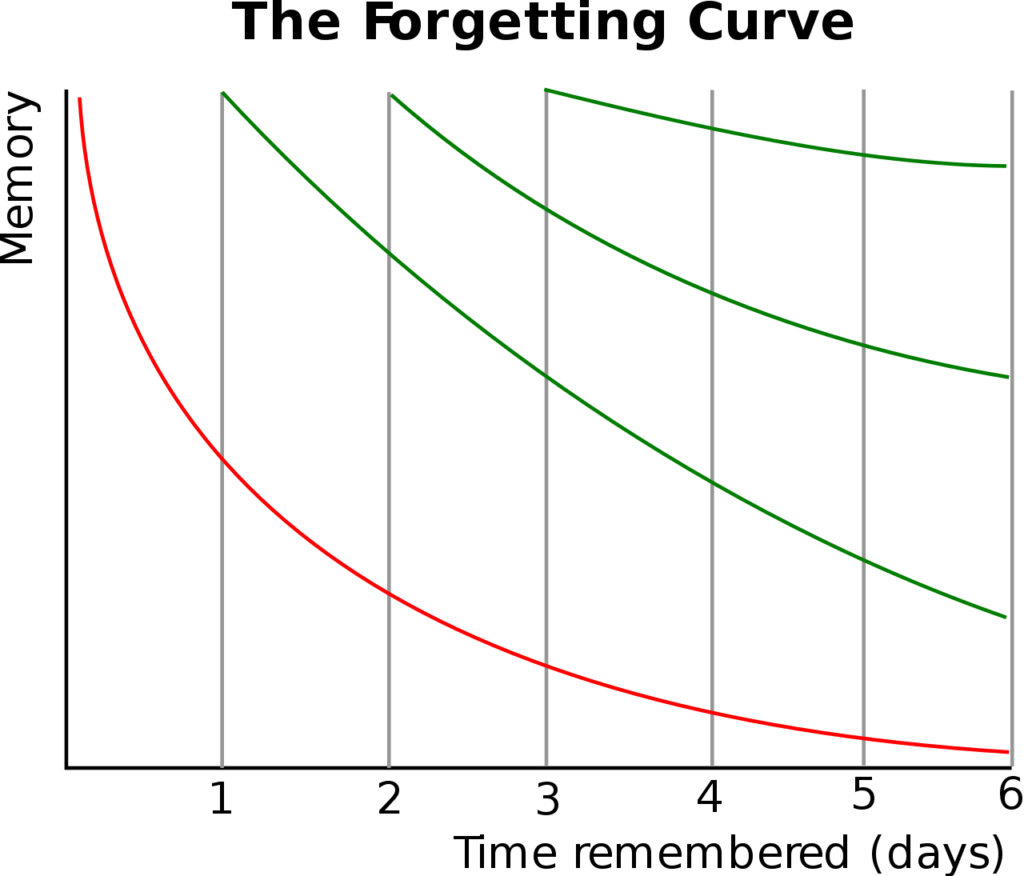With all the positive vibes bursting from the first article Change Your Mind, there is something we all must accept; the brain forgets stuff. But it’s ok, it’s not all bad – imagine if we couldn’t forget! If everything we experienced in our lives was meticulously recorded verbatim, it would be an unmanageable overload. Life would very quickly become a living nightmare if we were unable to forget. So our brains ignore a lot. Our sensory and short-term memory working away, deeming most stuff as not vital to survival or of interest. If it doesn’t threaten us or arouse our curiosity, then it bypasses us for more essential information. So what about the things that we do want to try to remember, or learn? This article digs into some ideas and methods we can use to help us to remember more effectively and to help increase our chances of recalling information when we need it.
The eureka moment for me was reading about the Forgetting Curve in several books, a phenomenon described in 1885 by the German psychologist, Herman Ebbinghaus. There are individual factors that will influence the exact rate of forgetting, but the general idea is expressed in the graph below.

The graph shows that we start to forget things after the learning moment, and this rate is exponential and seen in the flattening of the curve over time. There is rapid forgetting taking place within a few days. The experiment Ebbinghaus conducted involved trying to remember random strings of characters, so it has been argued that this scientific experiment doesn’t represent a real-world situation because we tend to learn things that have meanings attached, rather than unrelated strings of characters. (For more on this see Collins. S. 2019, & Dirksen. J. 2012) Even though the Forgetting Curve may not represent a realistic setting, later experiments showed similar results. So I choose to take on board the idea that after learning something (if we don’t do anything to reinforce the learning) then we will start forgetting, and the rate of this over time can be plotted on a curve that might look like the figure above.
So what are some of the ways in which we can try to counter the rate of forgetting? At various intervals over a period of time, if we reinforce the learning by trying to actively remember we reset the forgetting and boost the remembering. We could call these remembering sessions interventions or touch points. You can see from the second graph how this resets or boosts the retention of the information.

There are 2 approaches that can be implemented. The first is active recall, and the second is spaced practice. These 2 fundamental terms are so prevalent in articles, books and discussions about learning, we really must take them seriously and ensure we learn about what they are and how we can include them into our learning design. One way I like to think about these methods is to ask if we can remember what we had for dinner 30 days ago. Unless it was a special occasion the chances are that we could not remember. But we could use active recall and spaced practice to remember this. If we tried to recall what we had yesterday, then it is much more likely that we can remember. If we then asked again the next day what that meal was, the chances are that we can still remember. And then asked again but with a longer gap of say, 2 days (to allow some forgetting to occur) we probably could still recall it. By using this method and increasing the space between recalling we would eventually get to 30 days later and be able to remember. Imagine if we maintained this spaced-out recall over a year, we could increase the days to weeks and months in between the recall sessions and what this is doing is strengthening the neurological pathway and so creating a long-term memory.
I now question how effective our learning solutions are at work. I have also realised that we only really provide one half of what the learner deserves, and that is the content delivery. Yes, there is the consultation, identifying business goals and learning objectives, drilling down into the required content and delivering that content in a way that tries to make learners curious by capturing their attention. However, what is missing is the second part – what we could call the tail of the learning event. From a digital perspective there are systems that attempt to address this and offer spaced practice and AI. Systems that can assess the retention by delivering adaptive learning, corrective feedback, active recall/ retrieval, reflection, and the testing effect. But for my current situation, obtaining that type of system is not a reality, especially as we have just invested in an expensive LMS called SuccessFactors. We now need an intelligent front end that can handle this personalised learning, to simulate the effectiveness detailed in Benjamin Bloom’s piece: The 2 Sigma Problem (article to follow!).
What can be done with the tools we have then? Maybe an article to address this very question! “How to counter the effects of the forgetting curve when you have a dumb LMS”?